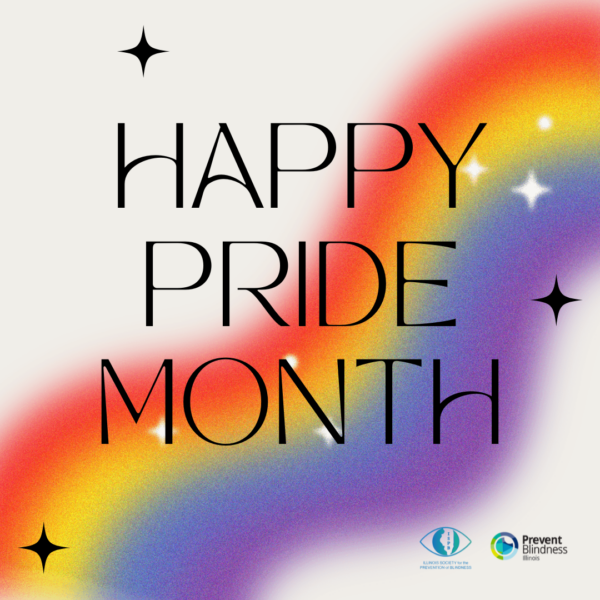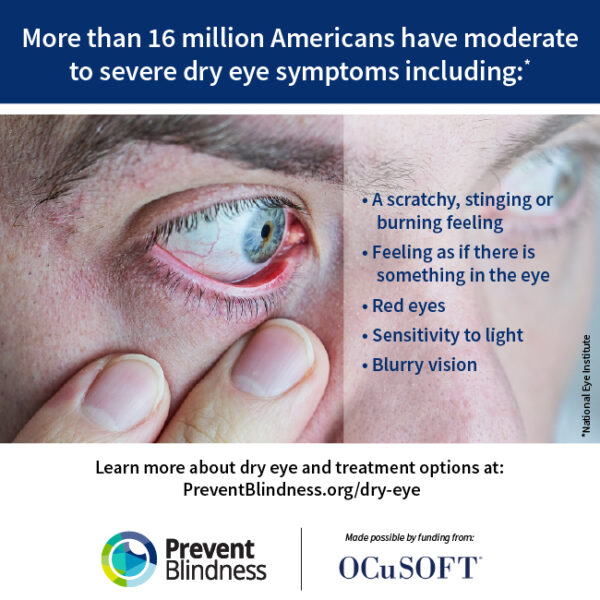ISPB and Prevent Blindness Illinois (PBIL) are joining in support of July as Dry Eye Awareness Month to help educate the public and healthcare professionals on the eye disease that affects nearly 16 million Americans, according to the National Eye Institute. Dry eye occurs when there is not enough tear film produced, the tear film is not draining properly from the eye, or the tear film is not the quality needed to maintain the health of the eye and clear vision.
We offer a variety of free resources, including fact sheets and shareable social media graphics available in English and Spanish, and a dedicated web page: preventblindness.org/understanding-dry-eye. For the fourth consecutive year, OCuSOFT ® Inc., a privately held eye and skin care company dedicated to innovation in eyelid hygiene and ocular health, is partnering with Prevent Blindness in support of Dry Eye Awareness Month.
Types of dry eye include “evaporative dry eye” which occurs when there is an inadequate amount of oil in tears, and “meibomian gland dysfunction (MGD),” a condition where the eyelid glands do not produce enough oil or it is of poor quality. MGD is the most common cause of evaporative dry eye.
Symptoms of dry eye may include:
- Fluctuating blurry vision
- Burning or stinging
- Particles in the eye
- Gritty, sandy feeling
- Itchiness
- Redness and inflammation
- Stringy mucus
- Extreme sensitivity, especially to cigarette smoke
- Increased sensitivity to light
Once a diagnosis of dry eye has been made, an eyecare professional may recommend the use of eye drops. We have created new materials on the proper way to take eye drops, including a printable one-sheet, a new informative video, “How to Use Eye Drops,” featuring Dr. Yara Catoira-Boyle, Visionary Eye Specialists, and a dedicated webpage at PreventBlindness.org/taking-eye-drop-medications.
Prevent Blindness also offers two Focus on Eye Health Expert Series episodes including, “Dry Eye and Meibomian Gland Dysfunction (MGD),” featuring April Jasper, OD, FAAO, Advanced Eyecare Specialists. And, “Dry Eye,” with Stephanie Jones Marioneaux, MD.
For more information on dry eye, please visit the Prevent Blindness resource page at PreventBlindness.org/understanding-dry-eye.




